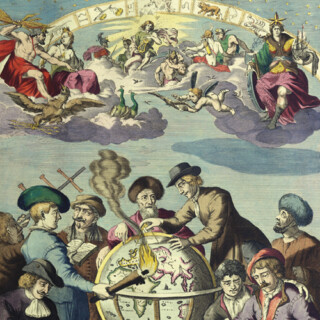Novus Atlas Sinensis
A Martino Martinio Soc. Iesu Descriptus Et Serenessimo Archidvci Leopoldo Gvilielmo Avstriaco Dedicatvs. Cum privilegio S.C. Maj. et Ordd. Foed. Belg.
Amsterdam,
Joannes & Willem Blaeu,
1655.
Folio (565 by 365mm), Engraved hand-coloured and gold illuminated frontispiece showing putti around a globe and a map of China, with the title printed on an open door, 4 pages of Dedications, 216, [16], xviii, 40 pp. Illustrated with 17 double-page, hand-coloured engraved maps, 16 of China and one of Japan, silk ties trimmed to binding, minor repairs to head and tail of spine, minor browning to a few pages, contemporary publisher's Dutch panelled vellum gilt over boards, with yapp edges, gilt-stamped rectangular frames and floral borders encasing a central lozenge-shaped floral ornament.
560 by 380mm. (22 by 15 inches).
2867
notes:
The atlas was based on the travels of Father Martino Martini (1614-1661), a Jesuit missionary in China who made use of "Chinese materials from a much earlier date, originally an atlas compiled by Chu-Ssu-pên in about 1312" (Shirley p. 241). Ferdinand von Richthofen in his China; Ergebnisse eigner Reisen und darauf gegründeter Studien, 1877-85, called Martini's 'Novus Atlas Sinensis' "the most complete geographical description of China that we possess, and through which Mart...
bibliography:
Koeman BL 29C [2:223.1LU] and Theatrum Orbis Terrarum; sive, Novus Atlas 1655 in Latin (Koeman BL 52 [2: 22521A]).
provenance:











